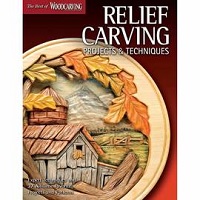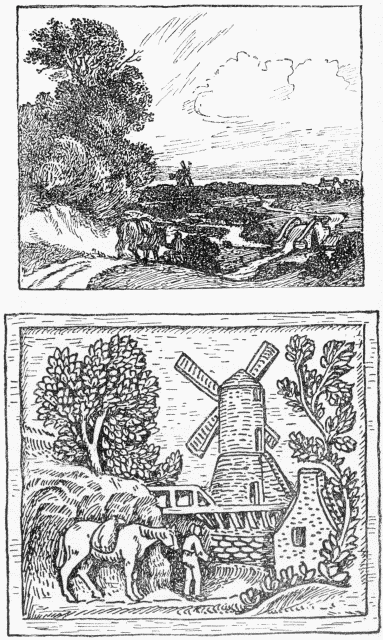CHAPTER XXIII
PICTURE SUBJECTS AND PERSPECTIVE
The Limitations of an Art not Safely Transgressed - Aerial Perspective Impossible in Relief - Linear Perspective only Possible in a Limited Way.

CLICK HERE CLICK HERE Those vague and shadowy boundaries which separate the domains of the different arts are being perpetually called in question. By what landmarks such indefinite frontiers may be distinguished, and how far they may be extended or transgressed, will always be a matter of dispute. Excursions of conquest are continually being made, and conspicuous among these, one which animates the hopes of many sculptors and modelers. Its aim is the appropriation of those charms which are the peculiar property of the graphic arts, more especially their power of expressing the effects of distance by means of linear and aerial perspective.
The background of a piece of carving is so obviously solid and impenetrable that any attempt to imitate an appearance of distance is sure to defeat its own ends, the loss being greater than the gain.
If there are limits to be observed in the foreshortening of a single leaf, how much more must they apply to the representation of whole landscapes?
Properly speaking, there is no distance available in the carver's art; its whole interest lies near the surface, and in the direct rays of the light which illuminates it. There is even a distinct pleasure to be derived from the sense that it is all carved out of a block of such and such thickness, pointing to the reasonable conclusion that this thickness should never be lost sight of, the carving ever and anon returning to the surface as a measure of music does to its key-note. This is exemplified in all the great works of antiquity, among which the Parthenon frieze may be quoted as evidence. On the other hand, all pictorial sculpture, such as carved landscapes with figures diminishing both in scale and projection, necessarily fail to uphold this sense of solidity, as there must occur large spaces which are hollowed out far below the surface to give another plane on which to carve the more distant objects in low relief, in the vain hope of making them appear to recede. Work in which perspective [221] of this kind is used must be viewed as nearly as possible from the point of vision produced by its vanishing-lines; this point is intelligible enough in the case of a painting, but when it comes to be carved into relief, if it happens to be seen from any other point of view, it necessarily looks all wrong, because every part is thrown into false relationship.
All this, of course, forms no argument against the use of explanatory landscapes with trees, buildings, etc. It only means that all such features must be treated in a way entirely different to that adopted by the painter—that is to say, in detached groups, each having some due relation to the original surface of the wood, and only very little to their perspective positions. In Fig. 74 are two diagrams of a landscape composition. The one is appropriate to a painted picture and the other to carving; both have pretty nearly the same number of features, except that in the carving there is no effect of distance attempted, whereas in the painting everything leads to this one particular distinction. The road goes into the picture, the bridge is seen end on, the house and mill are diminished in size, and [223] the horizon is strongly enforced by a shadow echoed in the sky. The carving looks ridiculous beside the painting, but it is a severe test, as it is not a subject which should be carved at all in that condensed way.

|
INFORMATION ABOUT HOW TO MAKE MONEY FROM WOOD CARVING |


